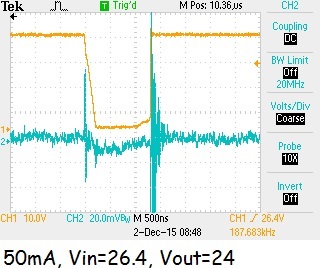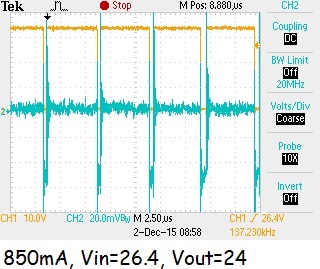Hello,
I am using the LM5088-2 in a prototype. I must use a Vin that goes as low as 26.0V. I need to maintain a 24V out as much as possible. My max current output was 1.2Amps.
I had the following set in the design:
Rsense = 0.51 ohms.
L = 180uH
Fsw = 187kHz (Rt = 33k)
I'm finding that the design is going into current limiting when Vin gets to about 26.5 Vdc or so. I understand that there is a low-drop out mode, but how do I calculate the new low-drop out mode current limit?





